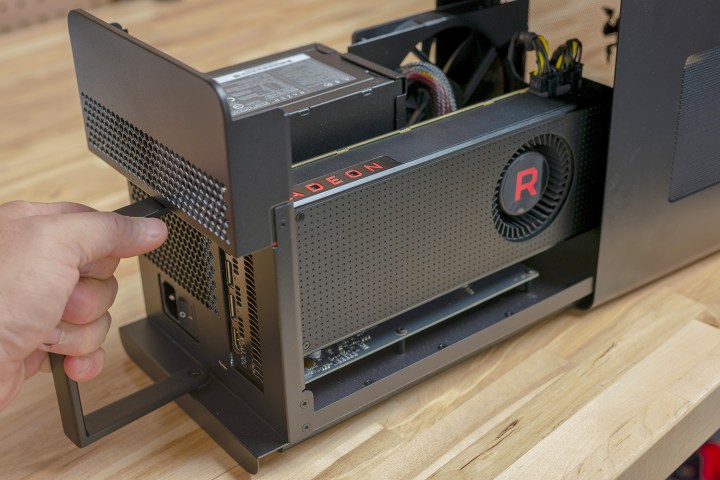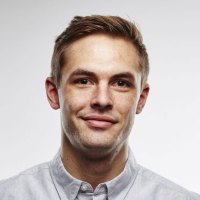One of the key underlying ideas behind the redesigned Mac Pro is that it is highly modular. That means you can customize it to your needs, not just before you buy it, but afterwards too. A key element of this concept is Apple’s system of MPX Modules.
So, what exactly are the Mac Pro’s MPX Modules? What are they for, and what components do they cover? And, importantly, are they worth your money? That’s what we’ll cover in this article.
We’ve already taken a look at the Mac Pro’s Afterburner card, so check out that article if you need more info on that particular component.
What do the MPX Modules do?

Each MPX Module (short for Mac Pro Expansion Module) is essentially a pre-packaged box containing everything you need to get an internal component up and running. There’s no configuration required, you just plug the entire MPX Module into the appropriate PCIe slot on the Mac Pro’s motherboard and away you go. You can then swap it out for a different MPX Module at a later date if you wish. Right now, Apple offers two main categories of MPX Module kit: Graphics and storage.
Most graphics MPX Modules contain one GPU, ranging from the AMD Radeon Pro 580X to the AMD Radeon Pro Vega II. However, there’s also the option to install the AMD Radeon Pro Vega II Duo. This single MPX Module actually contains two GPUs joined with an Infinity Fabric Link. This allows for incredibly fast data transfer between the GPUs.
In fact, you can install two of the AMD Radeon Pro Vega II Duo MPX Modules, giving your Mac Pro a total of four GPUs. This provides a huge amount of graphics power — 128GB of video RAM in total — which is perfect for intense workloads.
The higher-end graphics cards available in MPX Modules give you a number of Thunderbolt 3 ports on the back of the Module, as well as a single HDMI 2.0 port. The AMD Radeon Pro 580X MPX Module, on the other hand, has two HDMI 2.0 ports only. However, all graphics MPX Modules provide power for the Thunderbolt 3 ports on the top and rear of the Mac Pro.
If you want extra storage, Apple sells the Promise Pegasus R4i MPX RAID MPX Module. This gives you 32TB of extra storage (as 7200rpm SATA HDDs), massively expanding on the maximum 8TB storage you can get with the Mac Pro.
Although there’s been no official word from Apple, it’s possible that the company will offer more MPX Modules going forward. Seeing as the Mac Pro is built upon a foundation of modularity, we wouldn’t be surprised to see other components get the MPX Module treatment in the future.
Are MPX Modules your only options?

No. When you look at Apple’s specs sheet, there are a lot of expansion options at your disposal. Each MPX bay provides x16 gen 3 bandwidth for graphics, x8 gen 3 bandwidth for Thunderbolt, and DisplayPort video routing when used with an MPX Module. But you don’t have to stick to Apple’s MPX Modules. If you use third-party PCIe expansion cards, you get either one full-length, double-wide x16 gen 3 slot and one full-length, double-wide x8 gen 3 slot (in MPX bay 1), or two full-length, double-wide x16 gen 3 slots (in MPX bay 2).
Apple has designed the Mac Pro so that you can install third-party graphics cards and expansion options into the MPX Module slots. That means if you already have a powerful graphics card and want to continue using it, you don’t have to give it up.
Any graphics card that can be used in an eGPU box with a Mac can be fitted directly into the Mac Pro. However, there are a couple of things to be aware of. Firstly, if you want to use an Nvidia GPU in Windows using Boot Camp, Apple advises that you shouldn’t install it in slot 2. And secondly, each PCIe slot provides 300W of power to third-party graphics cards (but 500W to an MPX Module). If your GPU requires more than 300W of power, you’ll need to buy a Belkin AUX Power Cable Kit to provide it with the extra juice.
Those same PCIe slots work with a range of other PCIe cards, not just GPUs. For example, Apple says you can install “fibre channel cards, fibre networking cards, and pro video and audio interface cards” into the Mac Pro. That gives you plenty of expansion options outside of the MPX Module route.
Which MPX Modules should you choose?

Apple provides lots of choice when it comes to the Mac Pro’s MPX Modules, and picking the right one depends a lot on your workload and budget. Beyond that, our decision will be influenced by whether you have existing hardware that you want to use in the Mac Pro.
For example, if you already have a powerful graphics card and want to use that, it would be best to opt for the AMD Radeon Pro 580X MPX Module. This wouldn’t add anything to the cost of the Mac Pro, and you could swap this out for your own GPU when the computer arrives.
However, Apple’s higher-end GPU options are likely to be much more powerful than anything you already have. If you have extremely demanding workloads and don’t mind paying for the best performance, the option of having two AMD Radeon Pro Vega II Duos in your Mac Pro (for a total of four GPUs) is very hard to beat. We already know the Mac Pro is incredibly powerful, and the kind of performance offered by this GPU configuration will blow anything else out of the water.
If you’re seriously considering the Mac Pro, then the likelihood is you’re already working with large files, and thus probably already have a large storage solution. The Mac Pro is already well-equipped for this, as its dual 10Gb Ethernet ports let you connect to an external file server or storage device and transfer files incredibly quickly. If you prefer having your storage connected internally then the Promise Pegasus MPX Module may be worth considering, but we think most users will probably already have their storage sorted. Unless you have a specific need for the Promise Pegasus MPX Module, it may be best to avoid it.
Most importantly, the modular design greatly extends the longevity of the Mac Pro. That’s essential when you’re making an investment quite this expensive.



